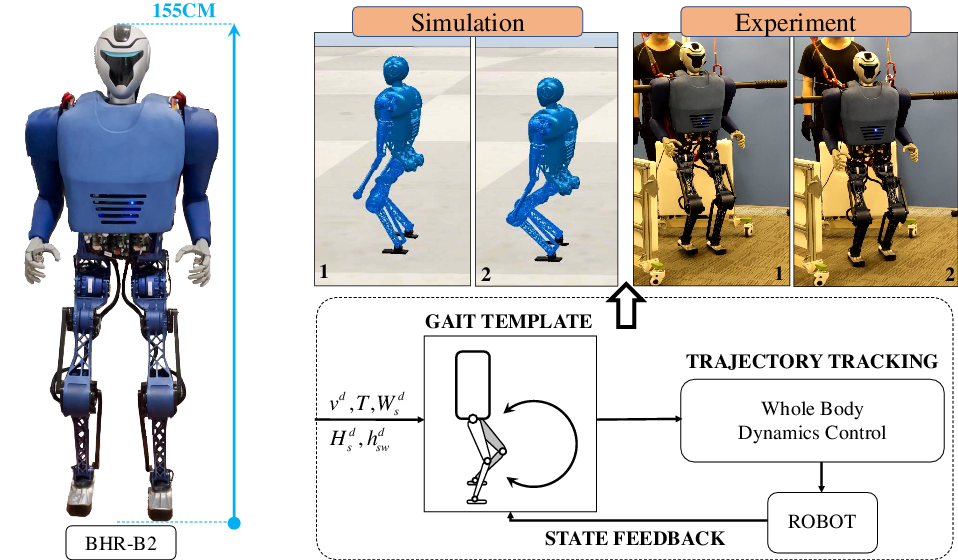The field of robotics has witnessed remarkable progress in recent years, with robots becoming increasingly capable of mimicking human movements. One of the most intricate and fascinating aspects of human locomotion is walking, also known as gait. Understanding and replicating natural walking patterns is crucial for developing robots that can seamlessly navigate complex environments and interact with their surroundings. This is where robot gait analysis comes into play.

Robot gait analysis involves a comprehensive study of a robot’s walking movements, encompassing various parameters like step length, stride width, joint angles, and ground reaction forces. By carefully scrutinizing these variables, researchers and engineers can gain valuable insights into the robot’s locomotion efficiency, stability, and overall performance. Furthermore, this technology holds significant potential for applications beyond robotics, including the diagnosis and treatment of gait disorders in humans.
Why is Robot Gait Analysis Important?
- Improving Locomotion Efficiency:
Analyzing gait parameters allows researchers to optimize a robot’s walking pattern for maximum energy efficiency. This is particularly crucial for robots designed for extended operation in the field, such as search and rescue or exploration robots.
- Enhancing Stability and Safety:
Gait analysis helps identify potential instability issues in a robot’s locomotion. By understanding how forces are distributed during walking, engineers can adjust the robot’s design and control algorithms to improve its stability and reduce the risk of falls.
- Enabling Adaptability to Different Surfaces:
Robots designed for versatile applications need to adapt to diverse terrains. Gait analysis plays a crucial role in enabling robots to adjust their walking patterns based on the surface they are traversing, be it smooth pavement, uneven ground, or slippery surfaces.
- Facilitating Human-Robot Interaction:
Robots interacting with humans need to move in a predictable and safe manner. Gait analysis helps in designing robots with natural and intuitive walking patterns, fostering smoother and more natural interactions.
Techniques for Robot Gait Analysis:
Several techniques are employed for comprehensive gait analysis of robots:
- Motion Capture Systems:
These systems use cameras to track the movement of markers placed on the robot’s body. The captured data is then processed to reconstruct the robot’s position, orientation, and joint angles over time.
- Force Plates:
Force plates embedded in the ground measure the ground reaction forces exerted by the robot during walking. This data provides insights into the robot’s weight distribution, momentum, and stability.
- Inertial Measurement Units (IMUs):
Sensors miniaturized IMUs are attached to different body segments of the robot. These units measure acceleration, angular velocity, and orientation, providing data on the robot’s instantaneous movement and joint dynamics.
- Computer Vision Techniques:
Advanced computer vision algorithms can be used to analyze video footage of the robot’s walking movements. These algorithms can automatically detect and track body landmarks, enabling the analysis of gait parameters without requiring physical markers.
Applications of Robot Gait Analysis:
Robot gait analysis has a wide range of applications across diverse fields:
- Bionic Prosthetics:
Understanding human gait is essential for developing advanced prosthetic limbs that mimic natural walking patterns. Gait analysis helps engineers design prosthetic joints and control algorithms that improve the wearer’s comfort, mobility, and overall gait performance.
- Rehabilitation Robotics:
Gait analysis is crucial for developing robotic exoskeletons and walking aids for individuals with mobility impairments. By analyzing the patient’s gait and identifying areas of weakness or instability, therapists can tailor rehabilitation programs and devise assistive devices that promote recovery and improve walking function.
- Sports Performance Analysis:
Analyzing an athlete’s gait can provide valuable insights into their running efficiency, injury risk, and overall performance. Robots equipped with gait analysis systems can be used to objectively assess athletic technique and identify areas for improvement.
- Human-Robot Collaboration:
As robots increasingly collaborate with humans in shared workspaces, understanding and replicating natural gait patterns is essential for safe and efficient interaction. Gait analysis helps in designing robots that move in a predictable manner, minimizing the risk of collisions or accidents.
FAQ:
1. What is the difference between robot gait analysis and human gait analysis?
While both involve studying walking patterns, robot gait analysis focuses on robot locomotion parameters and aims to improve robot design and performance. Human gait analysis, on the other hand, aims to understand healthy and pathological human walking patterns for diagnosis, treatment, and rehabilitation purposes.
2. How accurate is robot gait analysis?
The accuracy of robot gait analysis depends on several factors, including the equipment used, the environment, and the complexity of the robot’s movement. Modern motion capture systems and force plates provide highly accurate data, allowing for detailed analysis of gait parameters.
3. Can robot gait analysis be used to diagnose gait disorders in humans?
While robot gait analysis primarily focuses on robots, its principles and techniques can be adapted for human gait analysis. By comparing a patient’s gait to established normal gait patterns, healthcare professionals can identify potential abnormalities indicative of gait disorders.
4. What are the future prospects of robot gait analysis?
The field of robot gait analysis is continuously evolving with advancements in sensors, computing power, and artificial intelligence. Future developments are expected to lead to more sophisticated analysis techniques, enabling robots to walk with greater agility, adaptability, and human-like naturalness.
Conclusion:
Robot gait analysis is a critical tool for advancing the capabilities of robots and exploring their potential applications in various domains. By meticulously studying robot locomotion patterns, researchers and engineers can optimize gait efficiency, enhance stability, improve adaptability to diverse environments, and facilitate safe and intuitive human-robot interaction. As technology progresses, robot gait analysis will undoubtedly play an even more prominent role in shaping the future of robotics and its impact on our lives.
Closure
Thus, we hope this article has provided valuable insights into Stepping into the Future: Robot Gait Analysis for Enhanced Locomotion and Health. We hope you find this article informative and beneficial. See you in our next article!
